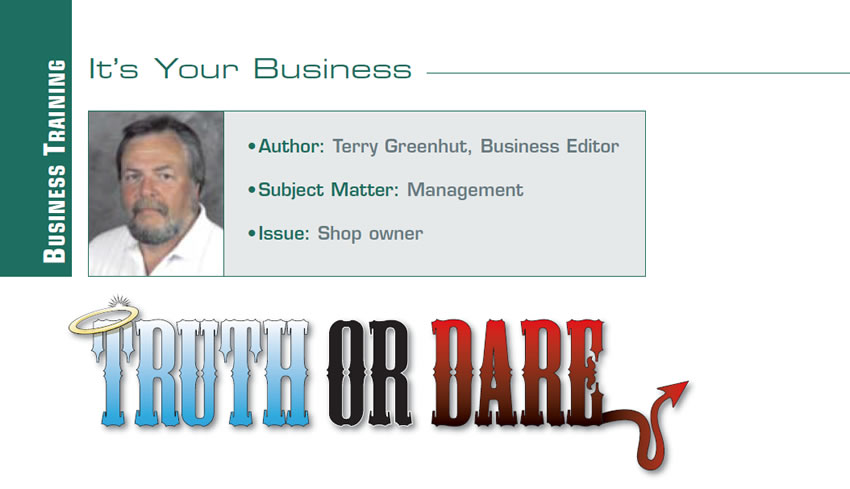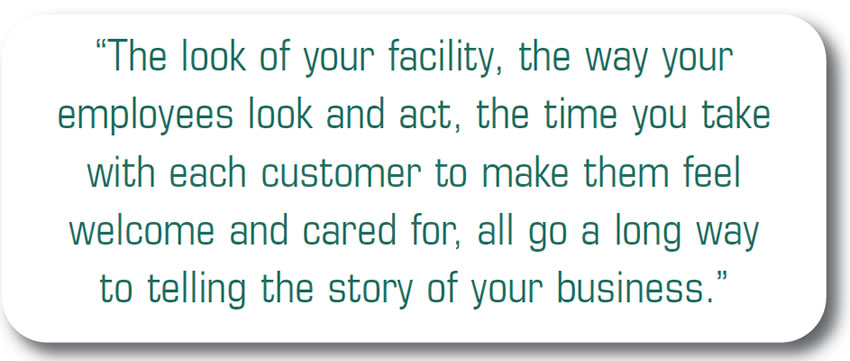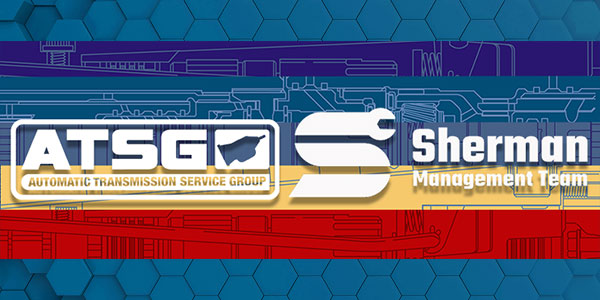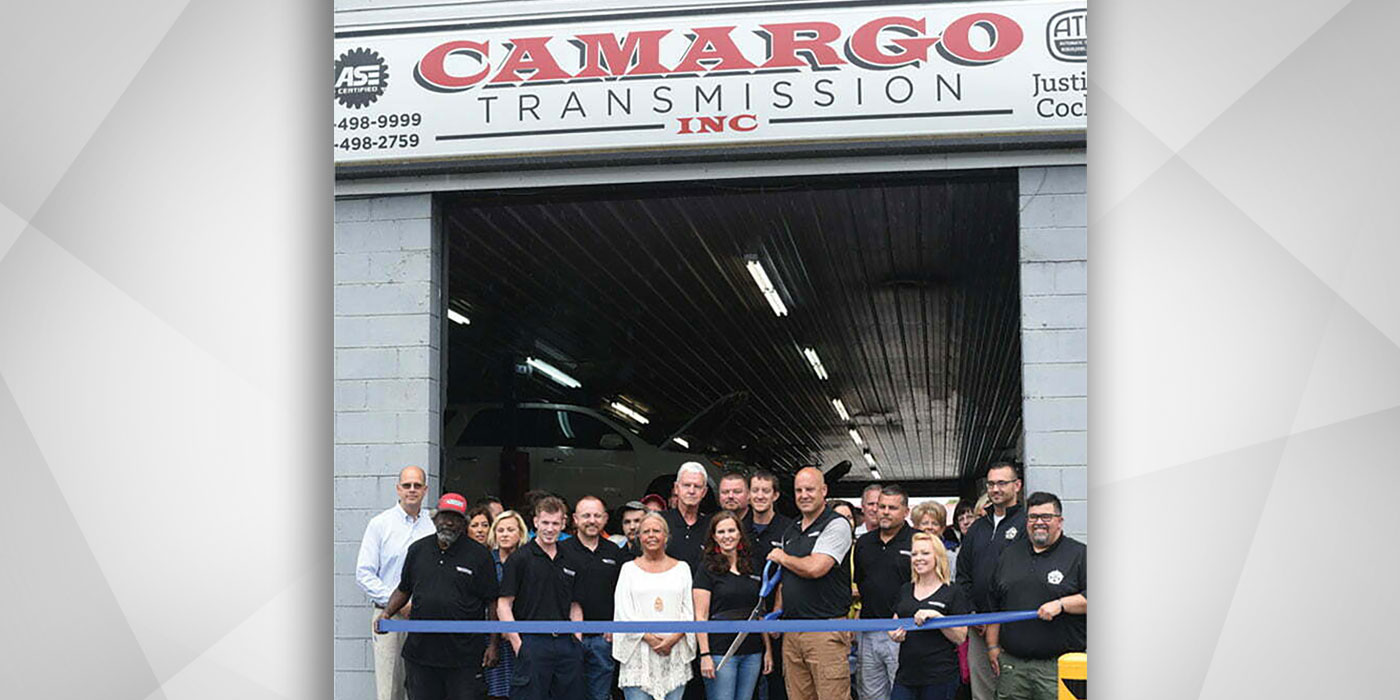
It’s Your Business
- Author: Terry Greenhut, Business Editor
- Subject Matter: Management
- Issue: Low-balling price is not path to success
Finally getting settled in after “The move from hell,” I’m now beginning to drive around the area taking a bit closer look at the stores and shops that line both sides of just about any street or highway. I’ve become especially interested in signs and banners these businesses hang out front. The claims some of them make to draw in customers can be pretty outrageous.
Always having taken the high road when I had my shops, I have a lot of trouble understanding how some people choose to take the low. Well, maybe they don’t choose it. Maybe it presents itself after they’ve struggled for a long time and see no other way out of their predicament but to take it. I guess I can understand the survival instinct kicking in and them figuring they’ll do whatever they think it will take to save the businesses; but what I can’t see is putting out signage with misleading claims that the business could never live up to, or if they tried, would make them go broke even faster. If the business was in trouble, wouldn’t the idea be to attract and make customers happy so it can be built back up?
The other day while waiting for one of the forever traffic lights they have here to turn green I started studying the sign posted just outside the office of the automotive shop on my left. It read, “WE WILL BEAT ANY WRITTEN ESTIMATE BY 20-40%.” Really? What does that mean? Will they write their own estimate that’s 20-40% less, but is that just what they will write, not what they will charge? Will they just knock 20-40% off whatever the other estimate was? Will they actually do the job for that much less? Will they provide the same kind of quality for such a lower price if indeed they will ever actually sell the job at the lower price they are going to quote, or will they tell the customer who walks in after reading that sign that it only applies to certain types of cars or jobs and that his isn’t one of them?
How can you legitimately make a blanket statement that you will beat any written estimate by 20-40% when you don’t have any idea what kind of an estimate a customer will walk in with? Did he already get low-balled by the shop that wrote his original estimate? If that’s the case what’s this shop going to do, “Low-ball the low-ball?”

Another shop I’ve driven by several times has two large signs permanently hanging from the front and side of the building. One says: “TRANSMISSIONS $99.95.” The other says: “TRANSMISSIONS $395.” How confusing is that? Neither one says that they start at those prices or if the units are used or rebuilt or even if they’re only resealed. There’s not even an indication as to whether installation, fluid and tax are extra. Since most customers who have never had transmission problems in the past have no clue about the true cost to repair them, they could easily be lured in only to be worked into much higher final costs.
Back in the late 1970s a group of shops got together and took an ad out each week in the “New York Daily News” a newspaper which at the time had one of the largest circulations in the country. They had to do it as a group because the ad space was so expensive that the only way they could afford it was for several of them chip in. The ad read; “REBUILT TRANSMISSIONS $149.” The small print under that read; “Two speed Powerglide ’65 and up.” Do you think people knew what kind of a transmission was in their car? To this day most of them can’t answer the question, “Does your transmission have overdrive or not?” They didn’t know what a Powerglide was or what kind of a car it was in or much else for that matter. All they knew was that when they got in the car that morning it didn’t move or it slipped or made noise or dumped its fluid in the driveway.
After a couple of years of attending meetings with these other shop owners and hearing how well they were doing with this ad, in a weak moment, I finally gave in to trying it out for myself even though I wasn’t real comfortable with the premise. I also decided that I would not up the price for installation or fluid if indeed a Powerglide came in. I would just charge the $149 and chalk the loss up to promotional cost. The guys tried to reassure me that a Powerglide was fairly rare at that time because ever since 1969 all the Chevrolets had THM350s or 400s so I probably wouldn’t get one. The first week I was in the ad, three of them came in and nothing else. The second week there were two. The third week I dropped out and never went into that form of advertising again. It was as if Jiminy Cricket was whispering in my ear, “This type of advertising isn’t for you.”
Working cheaper, or pretending to, is a ploy that’s probably been around since the guy who invented the wheel put the first one on a wagon, but how is anybody going to make money if the focus is on who can do it cheaper? Every person in business has to ask themselves on each sale, “Is there a way to make money at the price I’m quoting or not? If not, is there any good reason to sell so cheap?” Are you trying to move old inventory? Do you have employees standing around with nothing to do? Are you trying to round up enough cash to pay the rent and the electric bill? What would make you do a non-profit job, or several of them, if that’s what you’re really doing? Of course, if you were never planning to sell the job that cheap and your goal was to get customers in the door so you could jack them up to some profitable number, you’re just pulling the age old “bait and switch” which can’t possibly help your cause over the long term.

I can definitely go along with a sign that says, “If you have a written estimate stop in for a free second opinion.” That might make a customer feel safe. You could then get a chance to see if he really needs all the work that’s listed on his estimate. You might be able to save him money if some of that work isn’t necessary or can be postponed.
Being honest in your advertising and in dealing with customers pays long-term dividends. The goal is to have as many people as possible recommend you so you don’t have to try to compete with the shops who think advertising a low price is what it takes to bring in customers and keep them happy.
Low prices have never made transmission or auto repair customers happy because they often lead to substandard work, mistreatment, not honoring warranties or the shop not surviving to service its customers. What customers are really searching for is reliability, caring, friendliness, safety, convenience and a general feeling of well-being. If you can provide those things on a very consistent basis they will want to do business with you and recommend the people who trust them.

The look of your facility, the way your employees look and act, the time you take with each customer to make them feel welcome and cared for, all go a long way to telling the story of your business. If the place and the people look good and come across like the professional operation it’s supposed to be, customers will have faith that they will be well taken care of. If the shop and the people look run down customers will think that nobody there is trying very hard. The run-down shop will attract customers looking for a low price and wanting to negotiate any price they get even lower.
Volume has never been the answer in the auto repair business if it isn’t profitable volume. A full shop doesn’t mean that it’s making money. In fact, a full low-priced shop usually means a lot of comebacks, chaos and unhappy customers and staff. Given the choice I’d rather see a shop half empty with a full checkbook because it’s dealing honestly with customers while building a great reputation. The shop will fill up manageably as the reputation grows.
Here’s a tip I’ve given in the past but it always applies: After a while the advertising and promotion that businesses are doing get stale. The public doesn’t see it anymore. It just blends in with its surroundings. If your shop has gotten to the point where advertising just isn’t bringing in the customers like it used to, change something or a few things. Change the color of the building or the sign. Change the offer you make in your print or media ads. Get more involved with social media. Get out and meet the locals by participating in community events.
Donate to local worthy causes so people can see what a great person you are. When you run a special, email or text all of your existing customers to let them know. Don’t always have your advertising focused on bringing in new customers, go after your old ones as well. There’s a much better chance that they will spend money with you because, if you’ve done everything right, they already like and trust you.
Finally, be aware of everything you do and say. Customers hang on every move you make and every word they hear. Think before you talk or before you put anything in writing, especially advertising. Ask yourself, “Is what I’m about to do or say good for the customer and the shop? Does it offend anyone or group of people? Is it true? Is it honest? Can I really do it? If all the criteria is met, then ‘full-speed ahead.’” If not, fix it before it gets out.














